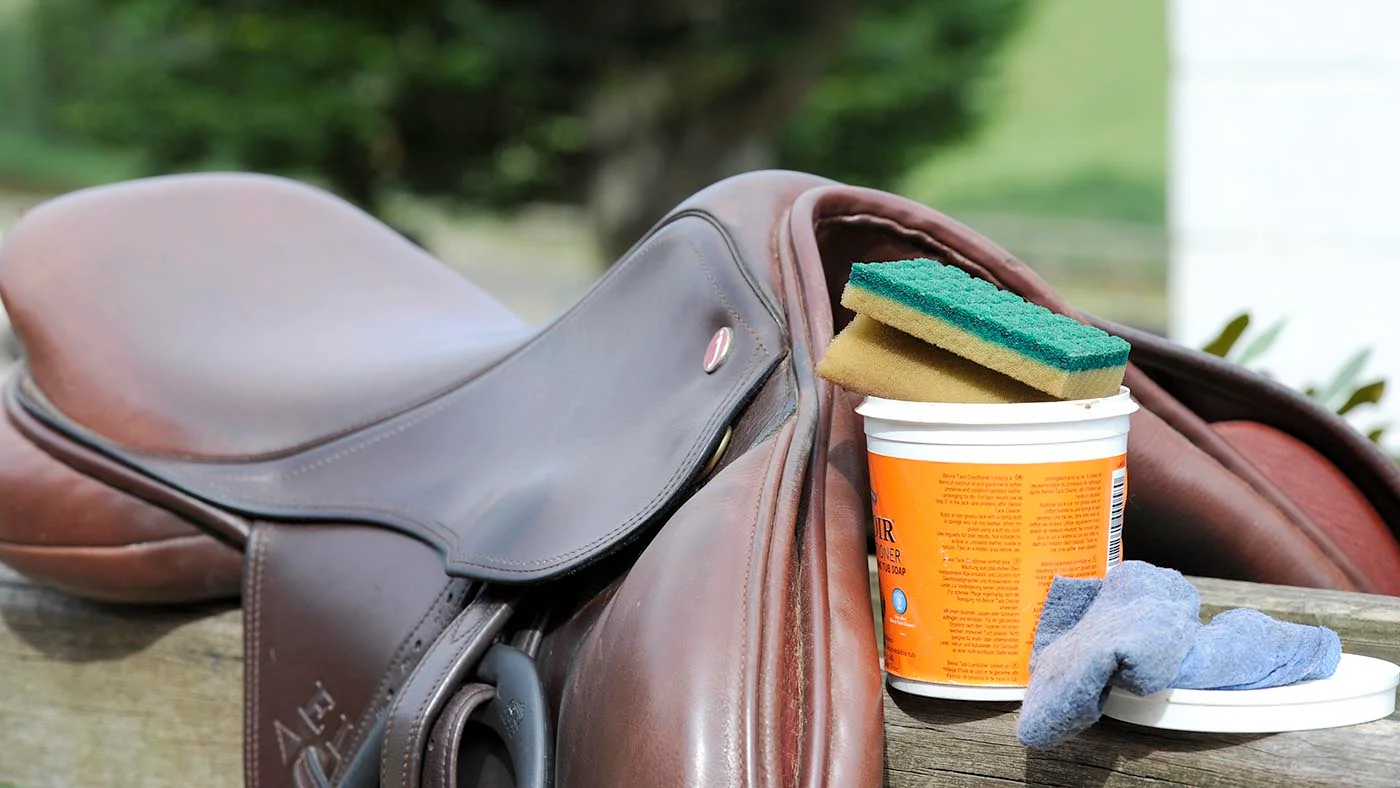Proper tack maintenance and care is essential for the safety and comfort of both horse and rider. Regular maintenance prevents equipment failure, extends the life of your gear, and ensures optimal performance during rides.
Essential Tack Maintenance Practices

Saddle
- Quick once-over: Look for any cracks or loose stitching.
- Billets and latigos: Ensure they’re secure and not showing signs of wear.
- Fit check: Make sure the saddle sits evenly and comfortably on your horse’s back
Saddle Pad
- Cleanliness: Is it free from dirt and sweat?
- Condition: Check for any signs of wear or compression spots.
- Placement: Ensure it’s properly positioned before saddling up.
Girth or Cinch
- Hardware: Inspect buckles and elastic for any fraying or damage.
- Cleanliness: Remove any dirt or hair that could cause discomfort.
- Fit: Ensure it’s snug but not too tight, allowing for comfortable movement.
Bridle & Reins
- Bit check: Look for rust or sharp edges.
- Leather: Ensure it’s supple and free from cracks.
- Stitching: Check for any loose threads or signs of wear.
Breastplate / Martingale
- Elasticity: Ensure it’s not overstretched.
- Fit: Confirm it’s adjusted correctly to allow free movement.
Weekly Tack Clean & Inspection
- Leather care: Clean with a suitable leather cleaner and condition to keep it supple.
- Hardware check: Inspect all buckles, snaps, and other metal parts for signs of rust or damage.
- Stirrup leathers: Look for stretching or cracks.
- Saddle pads & girths: Wash or air out to prevent odor and bacteria buildup.
Monthly Maintenance Checklist
- Deep cleaning: Disassemble tack for a thorough clean.
- Inspection: Look for mold, mildew, or dry rot, especially in stored gear.
- Lubricate hardware: Apply appropriate lubricants to metal parts to prevent rust.
- Inventory check: Ensure all tack items are accounted for and in good condition.
Seasonal Tack Care (Every 3–6 Months)
- Storage: Store off-season tack in a cool, dry place away from direct sunlight.
- Protective covers: Use saddle covers and bridle bags to protect against dust and scratches.
- Mold & mildew prevention: Use moisture absorbers in tack rooms during humid months.
- Inspection: Check for signs of pest damage or other environmental wear.
Emergency Tack Repair Kit Essentials
Useful items to have at hand in your tack room or trailer:
- Spare Reins or Headstall
- Chicago Screws or Quick-Fix Buckles
- Leather Ties or Zip Ties
- Duct Tape
- Stitching Awl or Leather Glue
- Bit Wipes or Sanitizing Spray
- Extra Girth
